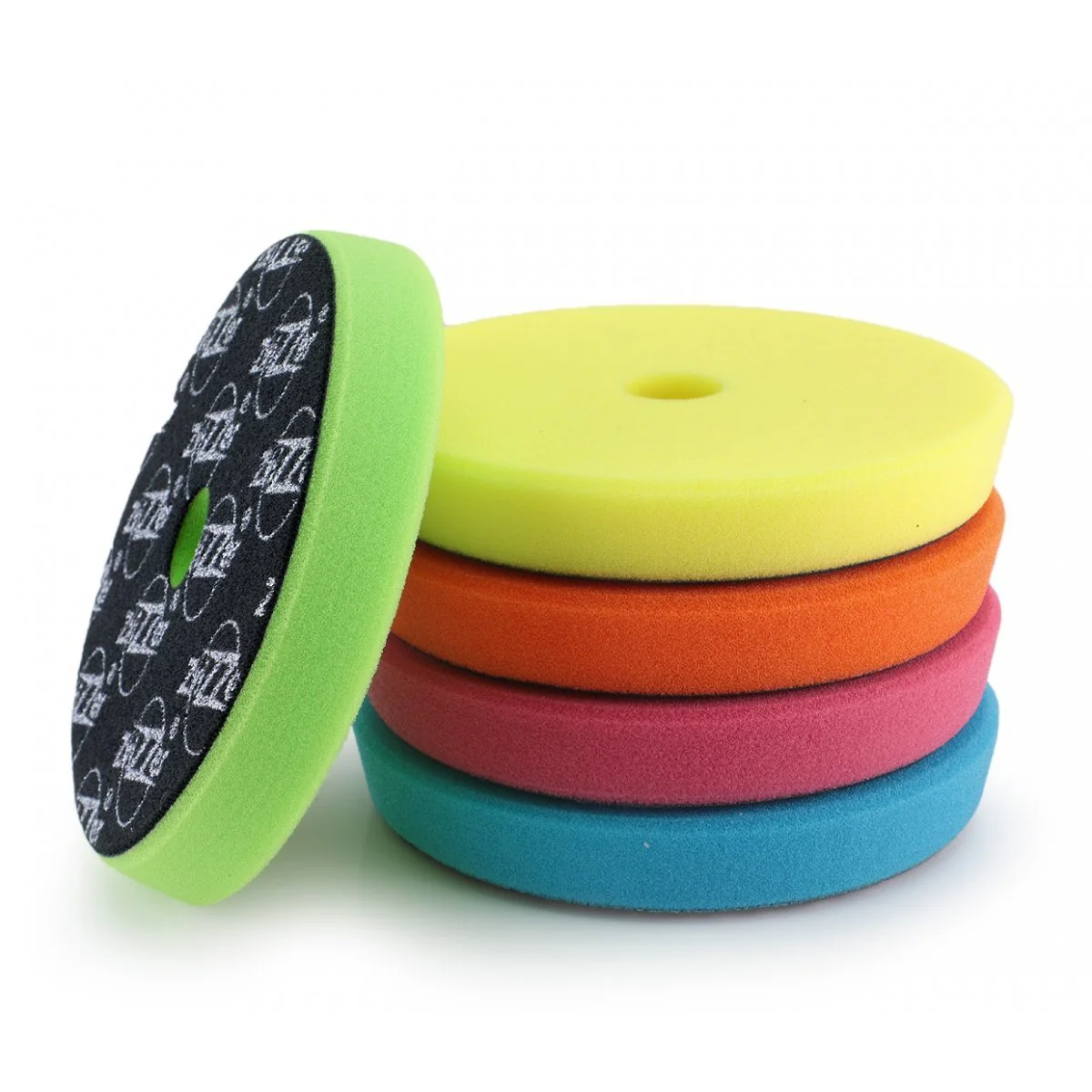Car sponge polishing pads are a type of polishing tool designed for car detailing and paint correction. They combine the softness and flexibility of a sponge with the abrasiveness of a polishing pad, making them ideal for gentle yet effective polishing.

Key Features of Car Sponge Polishing Pads
- Material:
- Made from soft foam or microfiber with a sponge-like texture.
- Designed to be gentle on paint while providing effective polishing.
- Design:
- Often dual-sided, with one side for cutting (removing defects) and the other for polishing (adding shine).
- Ergonomic shape for easy handling, especially during hand polishing.
- Compatibility:
- Can be used by hand or attached to a machine polisher (e.g., dual-action or orbital polishers).
- Available in various sizes to fit different polishers or hand applications.
- Color-Coded:
- Different colors indicate the pad’s purpose (e.g., black for finishing, yellow for cutting).
Types
- Foam Sponge Pads:
- Soft and flexible, ideal for light polishing and finishing.
- Great for applying wax or sealants.
- Microfiber Sponge Pads:
- More abrasive than foam, suitable for light to moderate paint correction.
- Effective for removing swirl marks and light scratches.
- Dual-Sided Sponge Pads:
- One side for cutting and the other for polishing.
- Versatile and convenient for multi-step detailing.
- Hand Polishing Sponge Pads:
- Designed for manual use, often with an ergonomic handle.
- Perfect for small areas or touch-ups.
Benefits
- Gentle on Paint: Soft sponge material minimizes the risk of scratching or damaging the paint.
- Versatile: Can be used for cutting, polishing, and finishing.
- Easy to Use: Suitable for both beginners and professionals.
- Cost-Effective: Affordable and reusable with proper care.
- Effective on Curved Surfaces: Flexible design allows for easy polishing on contoured areas.
How to Use Car Sponge Polishing Pads
- Choose the Right Pad:
- Select a pad based on the task (e.g., cutting, polishing, or finishing).
- For light defects, use a soft foam pad; for moderate defects, use a microfiber pad.
- Prepare the Surface:
- Wash and dry the car thoroughly to remove dirt and debris.
- Apply Polish or Compound:
- Add a small amount of polish or compound to the pad.
- Polish the Surface:
- If using a machine polisher, work in small sections with slow, overlapping passes.
- If polishing by hand, use circular motions with light pressure.
- Clean the Pad:
- Rinse the pad with water after use and let it air dry.
Applications
- Swirl Mark Removal: Gently removes light swirls and scratches.
- Paint Correction: Restores faded or oxidized paint.
- Gloss Enhancement: Adds shine and depth to the paint.
- Wax/Sealant Application: Ensures even application of protective coatings.
- Headlight Restoration: Polishes cloudy or yellowed headlights.
Tips for Using Car Sponge Polishing Pads
- Always start with the least aggressive pad and polish to avoid over-cutting the paint.
- Clean the pad frequently to prevent buildup and ensure consistent results.
- Use a backing plate if attaching the pad to a machine polisher.
- Store the pad in a clean, dry place to extend its lifespan.



